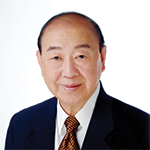The pace was quick; fellows and attendings often saw between 30 and 60 patients in a half-day shift, which was mind boggling.
The electronic medical record system at SRRSH was more streamlined than what I’m accustomed to in the U.S. There was no endless scrolling through irrelevant information. Patients brought concise printouts of lab results, imaging and assessments from other doctors, making it easy to quickly evaluate their condition. Some patients even brought physical copies of X-rays from as far back as 10 years ago. Patients are expected to bring their own records, and their records seemed more portable than in the U.S.
Another major difference was the absence of the dreaded inbox that’s so prevalent in U.S. medicine—an endless stream of patient messages, insurance denials and results to review. Here, patients had to review their lab results or get medication refills in person. This approach seemed to contribute to a more efficient workflow in a system with a high patient volume. On the other hand, it may require more effort from patients and families.
Given that China’s population of 1.4 billion is about four times larger than the U.S.’s, and Hangzhou alone is home to 11 million people, the number of patients seeking care is enormous. Many also travel from rural areas to seek specialty care at SRRSH. With only about 25 physicians per 10,000 people in China, compared with 36 in the U.S., patient volume remains a significant challenge.1
Due to Hangzhou’s high population density, the expectation of personal space and privacy is less than in the U.S. In one instance, an older woman in the clinic sat in the examination chair while a young man stood nearby. I assumed they were mother and son. However, it turned out they were both patients and did not know each other. I was a bit taken aback that the young man had listened in on the older woman’s exam! I quickly learned this was not uncommon. At times, several patients would crowd into the same examination room to try to assure they would be seen by the doctor.
At the end of the visit, patients could often immediately get labs or imaging done, sometimes returning later that same day to discuss results with the doctor. This felt faster than the U.S. system, in which one may have to wait months for insurance approval and scheduling for something like an MRI.



